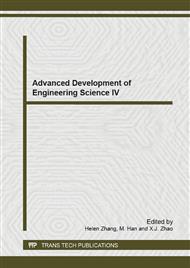p.492
p.496
p.500
p.504
p.508
p.512
p.516
p.521
p.526
Virtual Machines Scheduling Algorithm Based on Multi-Objective Optimization in Cloud Computing
Abstract:
How to reduce energy consumption while improving utility of datacenter is one of the key technologies in the cloud computing environment. In this paper, we use energy consumption and utility of data center as objective functions to set up a virtual machine scheduling model based on multi-objective optimization VMSA-MOP, and design a virtual machine scheduling algorithm based on NSGA-2 to solve the model. Experimental results show that compared with other virtual machine scheduling algorithms, our algorithm can obtain relatively optimal scheduling results.
Info:
Periodical:
Pages:
508-511
Citation:
Online since:
October 2014
Authors:
Price:
Сopyright:
© 2014 Trans Tech Publications Ltd. All Rights Reserved
Share:
Citation:


